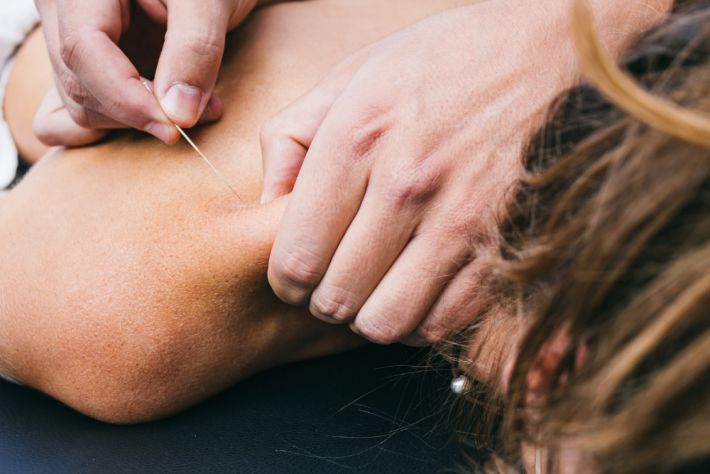
When you don’t know what it is and the many benefits it can bring, dry needling can sound a little scary, particularly for patients who are not exactly big fans of needles.
Dry needling, however, is nothing to be fearful of and is now being used more and more in physiotherapy clinics as a highly valued treatment tool.
Read on before you make up your mind about whether dry needling is right for you.
What is dry needling?
Dry needling is a skilled technique performed by trained Physiotherapists and other medical professionals involving the insertion of small filament type needles into trigger points (knots) within a muscle, with the goal of stimulating it.
Dry needling differs from other types of physiotherapy because it focuses on stimulating these trigger points and releasing the tension in order to alleviate pain.
The technique is fast, as it takes around 5 minutes, compared to 20 minutes or more for a massage technique.
How does dry needling work for muscle pain?
Some muscles become so tight that they simply cannot be released with physical manipulation alone. This is where dry needling comes in.
By stimulating the muscles to twitch, the tightness is released almost immediately and, more often than not, the pain subsides, leaving you pain-free.
Some common conditions treated with dry needling:
- Headaches
- Neck pain
- Back pain
- Whiplash
- Sports injuries
- TMJ (jaw) pain
- Repetitive strain injuries
Why dry needling isn’t the same as acupuncture
You may confuse dry needling with acupuncture, and with similar-looking needles, we don’t blame you.
Dry needling isn’t the same as acupuncture though. Here’s some of what makes them different:
- Practitioners of dry needling attempt to release tension from knots and trigger points in muscles, whilst acupuncturists insert needles to release endorphins and affect the nervous system.
- A practitioner inserts short, thin, stainless steel filiform needles into pressure points, whilst acupuncture involves using long, thin needles to stimulate nerves in the muscles and under the skin.
- The primary philosophy of acupuncture is that a body can be healed when chi, or healing energy, is released, whilst dry needling is specifically designed to relieve tightness and pain in muscles.
Are there any risks to dry needling?
Whilst dry needling performed by a qualified physiotherapist is generally considered safe, there are mild risks to consider:
- Temporary soreness or tenderness
- Minor bruising
Some patients will experience a mild, dull ache during treatment and up to 24 hours post-treatment, but this is far less painful than their reason for trying dry needling in the first place.
Dry needling is a fantastic technique used for muscle pain and it really does work. So, if you suffer from muscle pain and haven’t tried dry needling yet, we recommend giving it a try.
Want to find out more about dry needling for your muscle pain or book an appointment?
At Morley Physiotherapy, we are experts in dry needling and use this technique to help our clients in Dianella and other Perth eastern suburbs get pain free.
Contact us today.
